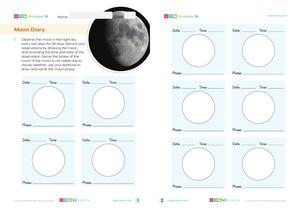Begin the lesson by discussing why the moon appears larger and brighter than stars, despite being smaller. Use this as a hook to engage students' curiosity about the moon and its movements.
Go to the LessonLesson Plans
Movements of the Moon
Learning Objectives
- Understand why the moon appears larger and brighter than stars, despite being smaller.
- Explain how the Earth’s gravity affects the moon’s orbit.
- Describe the phases of the moon and how they are caused by the moon’s reflection of sunlight.
- Identify the difference between waxing and waning phases of the moon.
Introduction and Hook
Direct Instruction
Explain how the Earth's gravity affects the moon's orbit and introduce the concept of the moon's phases. Use diagrams to illustrate the moon's orbit and phases.
Guided Exploration
Explore the phases of the moon by observing images and videos. Discuss the difference between waxing and waning phases.
Hands-On Activity
Independent Practice
Assign students to research and present on the different phases of the moon, explaining the differences between waxing and waning.
Check for Understanding
Review and Reflection
Reflect on the lesson by discussing how the moon's phases are a result of its position relative to the Earth and Sun. Encourage students to share their observations from the moon diary activity.
Assessment and Extension
Conclude the unit with a quiz to test comprehension of the moon's movements and phases.
Try the Quiz





